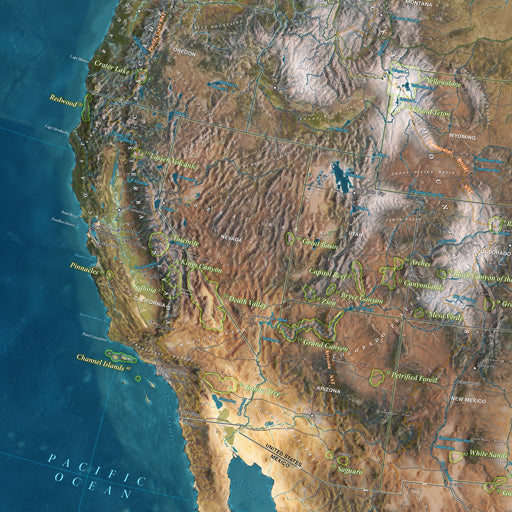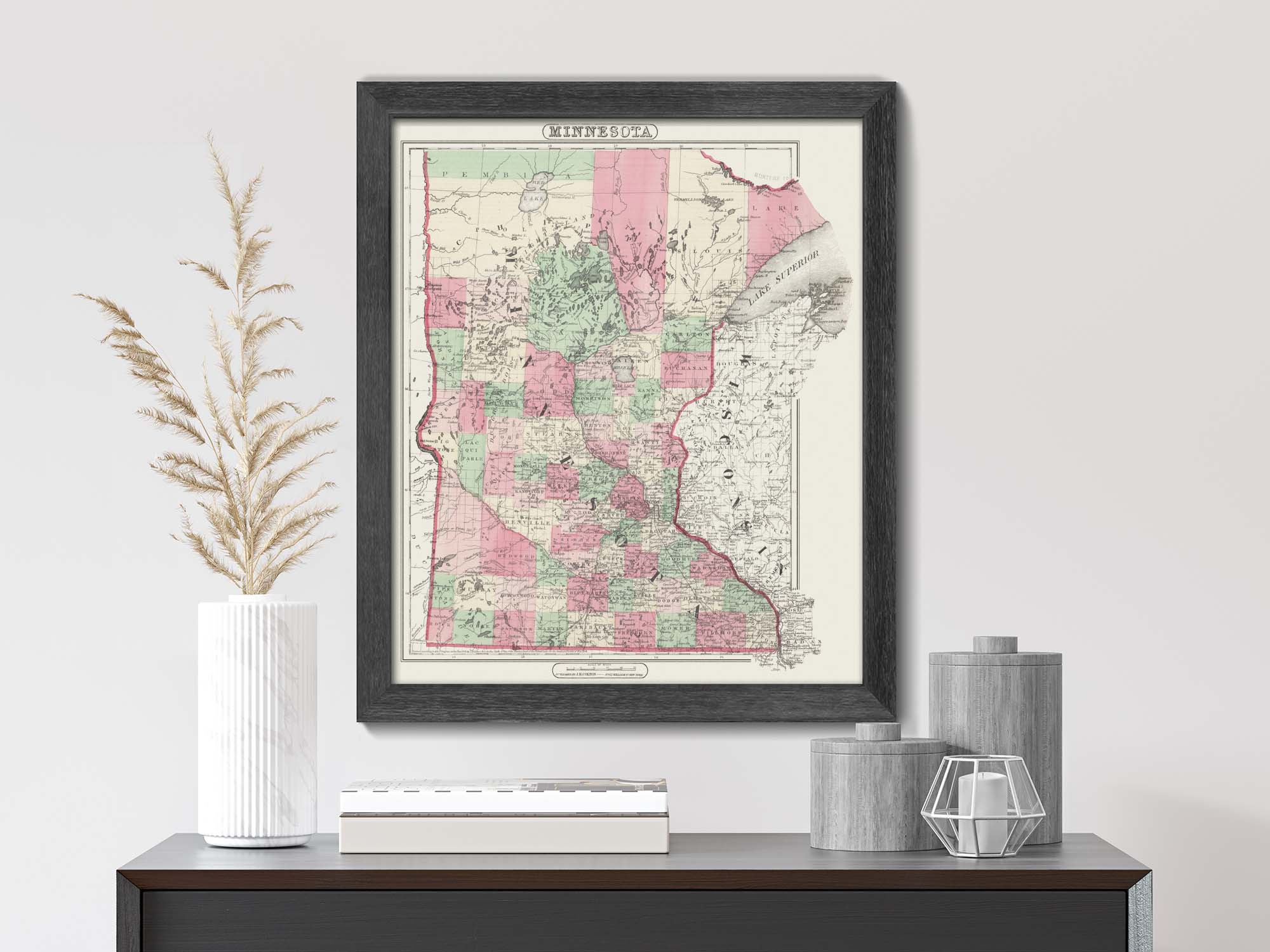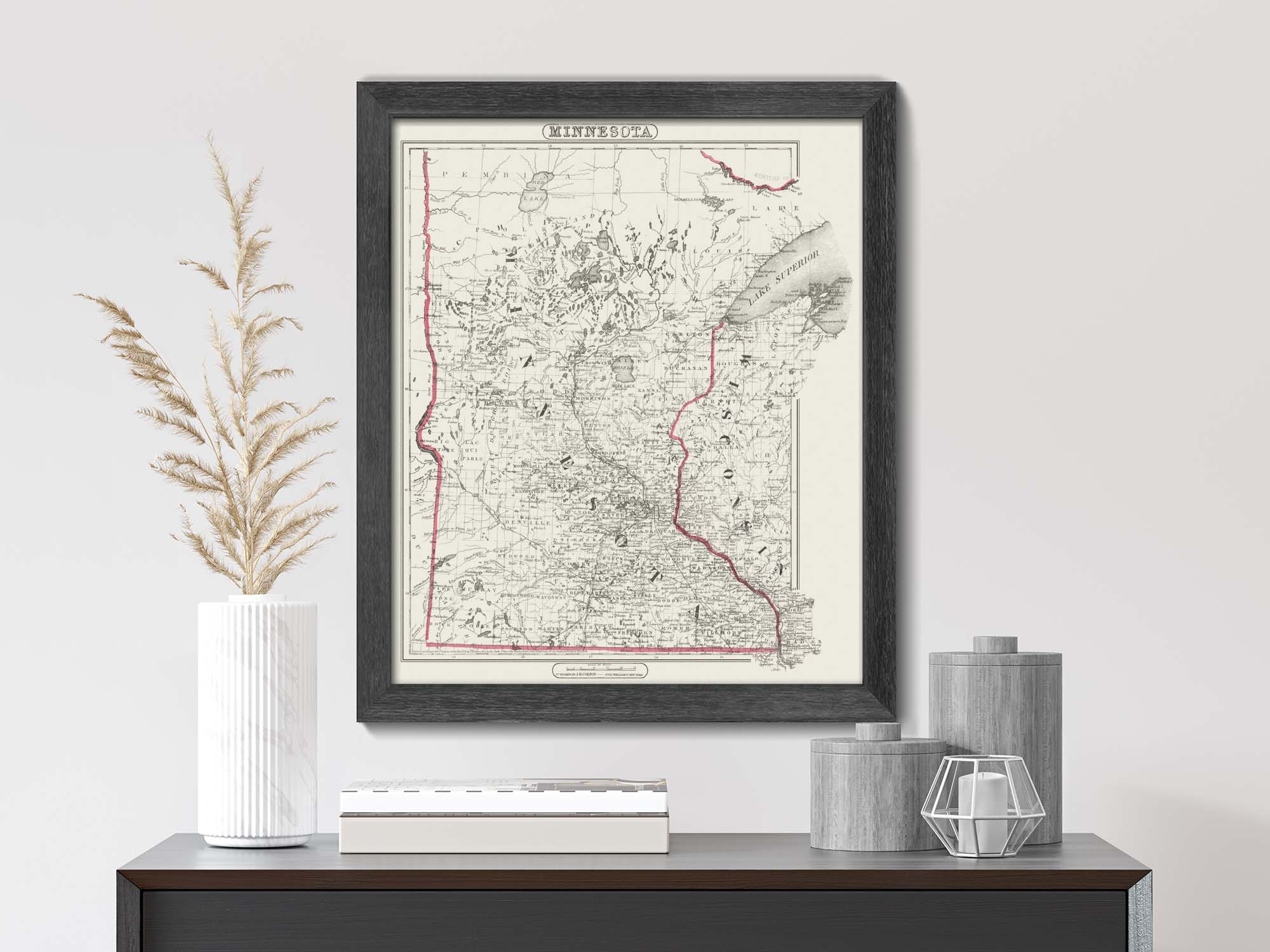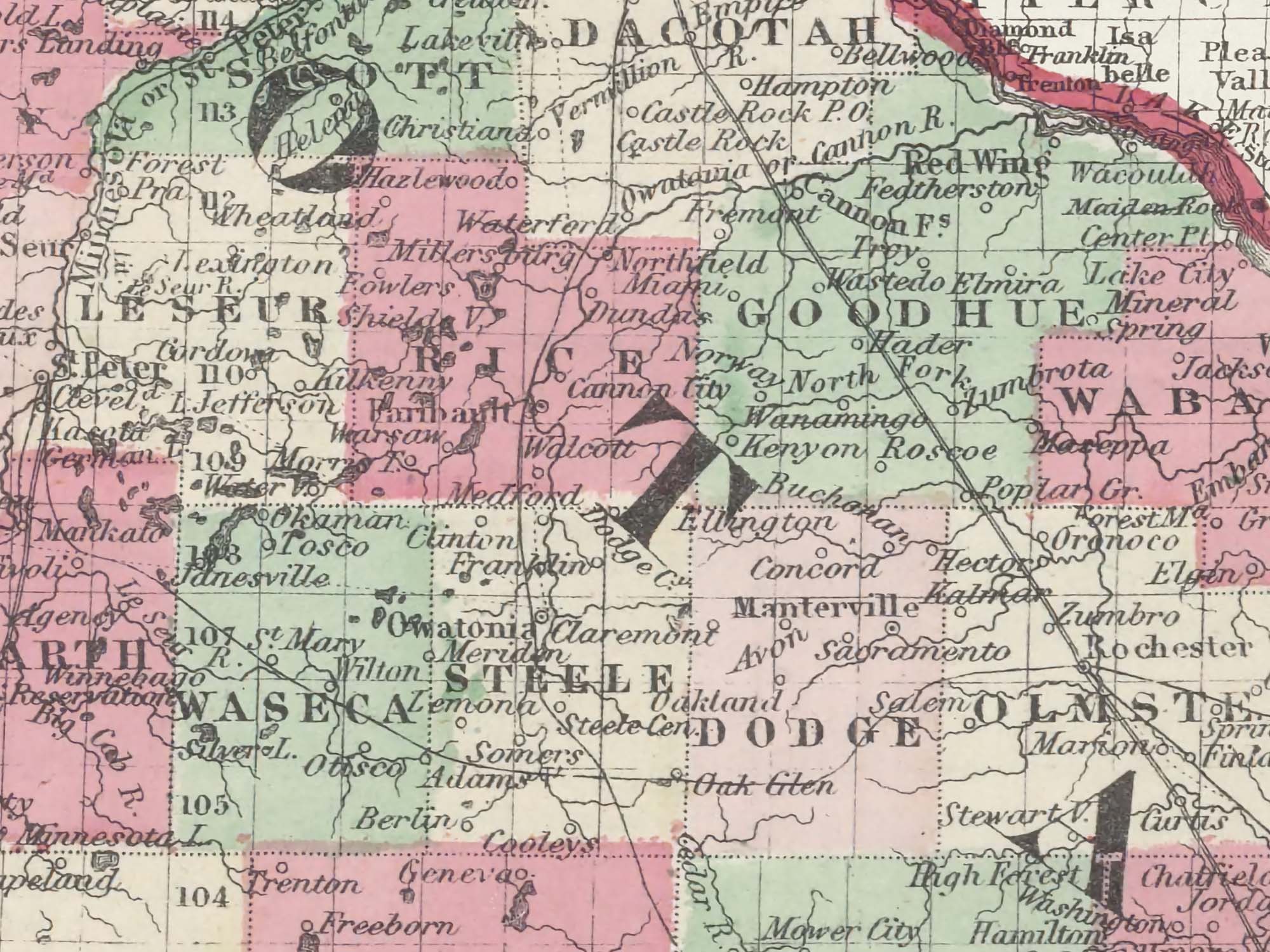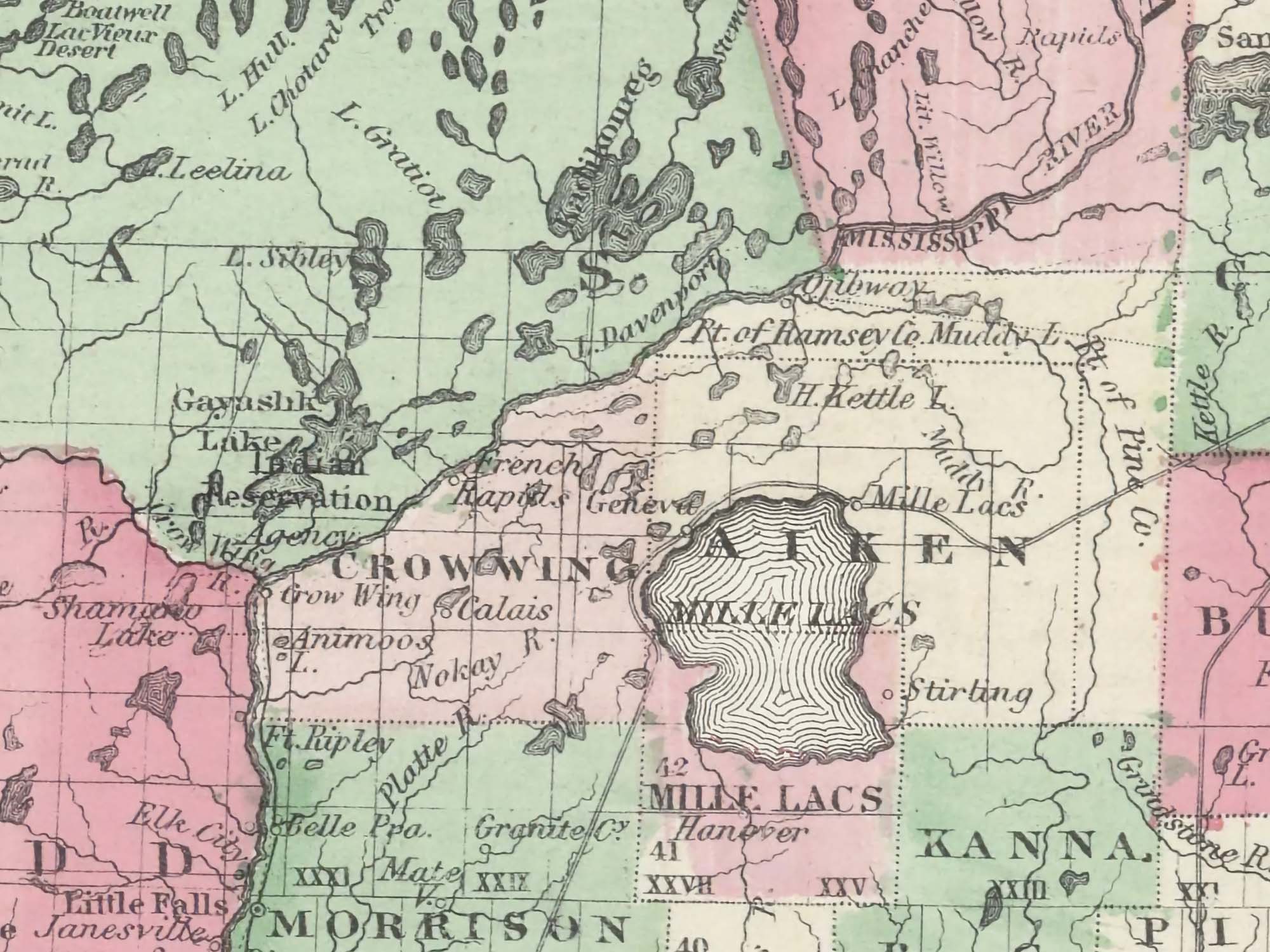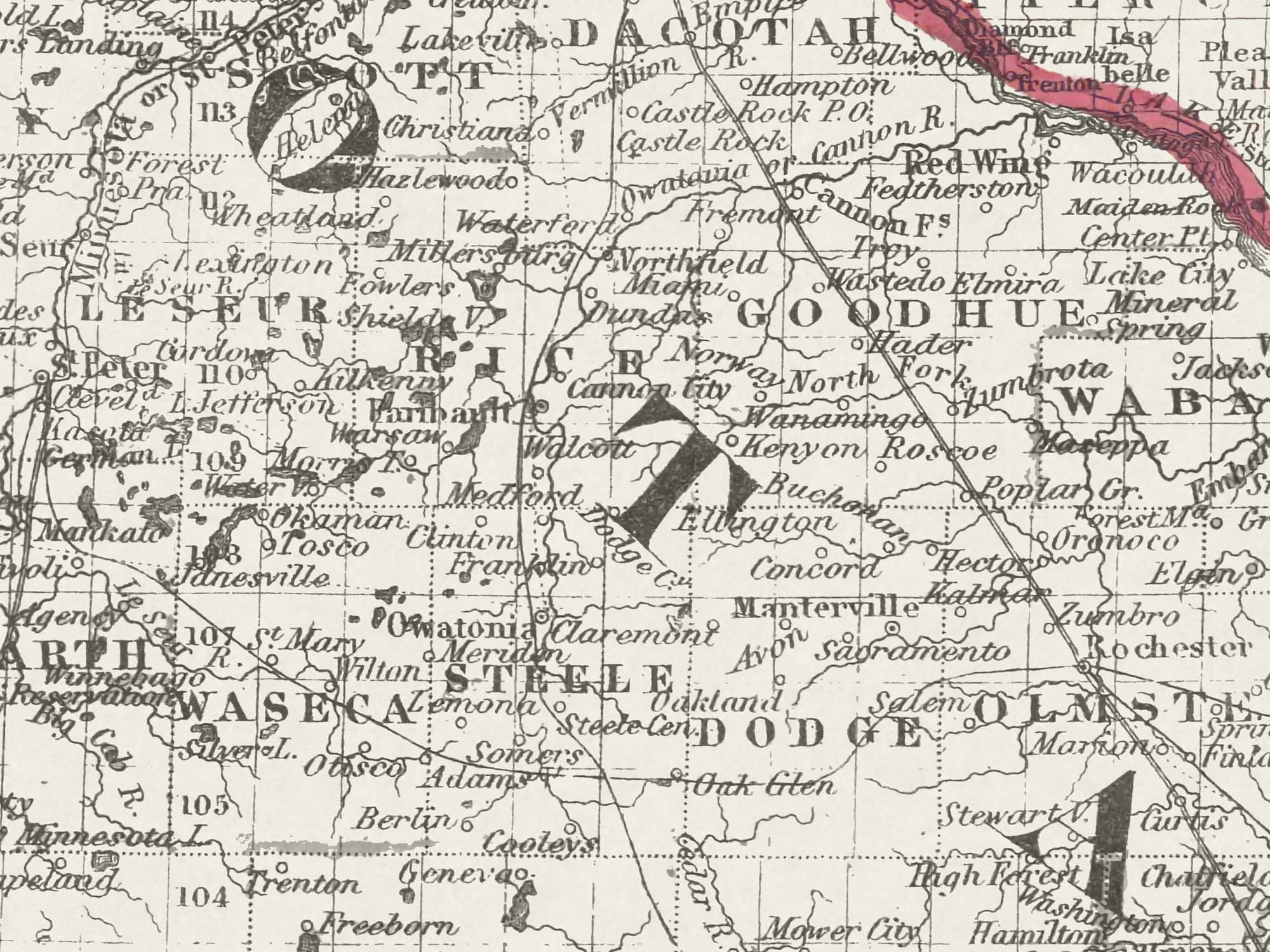This map is a faithful reproduction of the original 1850 map restored to its former glory using the latest digital imaging technology.
Vintage State of Minnesota Map
Standard maps will enter production right away, within the next business day. Larger orders may take more time.
All push pin board maps (framed or canvas wrap) include push pins, are easy to hang, and ship free in the continental US. We'll select the optimal shipping method for fast delivery.
For personalized maps we collaborate closely to guarantee satisfaction. Expect a proof to be sent to you. Your swift responses will facilitate the production and shipping process.
If there are any problems with your map we will take care of you. Returns for all maps are straightforward and hassle-free.
For personalized maps, engaging with the email proofs we send ensures that the final product meets your expectations precisely.
We have 30+ years of cartography experience, meticulously craft each order by hand to ensure excellence, and 100% guarantee your satisfaction. We produce maps that are built to last, with state of the art production and archival quality materials.
Customize with quotes, legends, or dedications using "Personalize Map" options to craft your masterpiece map. Or reach out to us if you don't see the option you want.
We collaborate with you from design to approval of your proof so that you are 100% happy before we print and ship.
Our excellent customer service is always open to you.
Restored 1850's Map
Fine Art Quality
Impressively produced with Archival Inks, Rich Color Depth, and clear and vivid labels. We use premium matte paper.
Expert Craftsmanship
We prepare the map using Fine Art Giclee production techniques. We roll the map in a sturdy tube for shipping to provide a crease-less piece of art.
Vintage State of Minnesota Map
- Description
- Specs & Construction
About the Map: Explore the geographic history of the state of Minnesota in this historic map. This map is part of our vintage USA State Map Collection showing the geography of the states in the 1850-1860s and the time of the Civil War.
Restoration: The map is a reproduction of the original map meticulously restored to its former glory using the latest digital imaging technology. Using this technology, we carefully restored the colors, torn edges, creases, smeared writings and more. We enhanced features while keeping the original character and design of the map.
This map is unframed, sold as an art print. Frames are shown for illustration ONLY.
Geographic Details: This historic map shows many details of towns, roads, railroads, and waterways in the 19th century of the United States.
Shows historic cities such as Minneapolis, Saint Paul, Duluth and more!
Explore the historic boundaries of the cities, counties, and states that have changed over the years. Discover physical changes in the geography - such as former lakes and canals used for transportation and agriculture.
Available Sizes: For an impressive display and maximum readability, choose the largest size available.
Smaller size prints make excellent wall art in groups. Please note that there is no guarantee that small text will be legible in print.
Great Gift For: Interior Designs, Teachers, History Buffs, Anniversaries, Birthdays, Friends, Family, and many more!
Production and Shipping Times: The amount of time it takes for your map to arrive depends on where you live and how fast you approve the proof if you’ve ordered a custom map. See Production & Shipping.
Quality and Guarantee: We stand behind our work and guarantee the construction and quality. Contact us if you have any problems with your map and we will coordinate to ensure you are very happy with your purchase.
Materials and Production: This reproduction is printed on Fine Art Museum Quality Paper with giclée inks. The thick paper is archival quality and acid-free with vivid color definition.
Paper details:
- 10 mil thick
- 230 gsm weight
- Museum Quality Matte finish
Made in the USA by a USA Small Business and Professional Geographer & Cartographer.
Shipped in a tube and rolled to eliminate creases.
Why choose GeoJango Maps
- We have a lifelong passion for maps, backed by 30+ years of cartography experience and Master's Degrees in Geographic Information Systems (GIS) from Penn State University and Environmental Science from the University of South Florida.
- Our incredible investment into the design of our maps results in unparalleled detail that matters: they will educate you, and grow with you as you travel the world and track your travels—where other maps miss the mark.
- We’ve built the leading map production studio in the USA and use exclusively USA-made materials. Each pin map is proudly crafted by hand, printed by us on the finest materials, mounted on museum-quality Gatorfoam, and carefully framed just for you.
History of the Time
The 1850s were a pivotal and transformative period in the history of Minnesota, marked by rapid growth, political changes, and the state's emergence as a key player in the national debates over issues like statehood and land acquisition.
Economically, the 1850s were a time of expansion and diversification for Minnesota. The state's economy was closely tied to its abundant natural resources, including timber, fur, and minerals. Logging and fur trading were major industries in the region, and the discovery of iron ore in the Vermilion Range in the mid-1850s paved the way for Minnesota's future role in iron and steel production. The construction of railroads and waterways facilitated transportation and trade, connecting Minnesota to regional and national markets.
Politically, the 1850s were a significant period for Minnesota as it navigated its path toward statehood. The region had been part of the Northwest Territory and later the Minnesota Territory, with St. Paul serving as the territorial capital. The issue of statehood and the terms of Minnesota's admission to the Union were subjects of debate. The state's alignment with the Republican Party, which opposed the extension of slavery into new territories, reflected its stance on key national issues.
Cultural and social developments were also prominent during the 1850s. Education was a priority for the state, with the founding of institutions like the University of Minnesota contributing to the state's intellectual growth. The growing population, including immigrants and settlers from diverse backgrounds, enriched the state's cultural fabric.
As the 1850s came to a close, Minnesota was on the brink of achieving statehood. In 1858, the state was officially admitted to the Union as the 32nd state. This marked a significant milestone in Minnesota's history, as it transitioned from a territorial entity to a full-fledged state with its own representation and governance.
The 1850s were also characterized by the continued displacement and marginalization of Native American communities in Minnesota. The forced removal of Dakota people from their ancestral lands and the subsequent conflict known as the Dakota War of 1862 cast a shadow on the state's history during this period.
In conclusion, the 1850s were a transformative period for Minnesota, marked by economic growth, political changes, and the state's journey to achieving statehood. Minnesota's alignment with antislavery principles, its contributions to education, and its role in shaping the nation's history showcased its evolving identity and influence within the broader narrative of American history.








